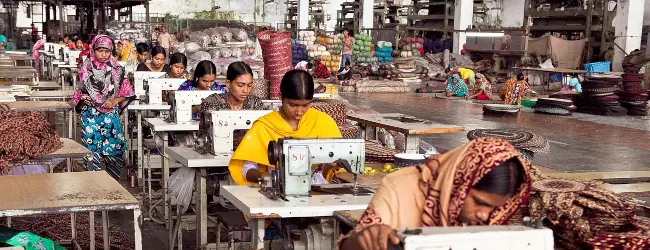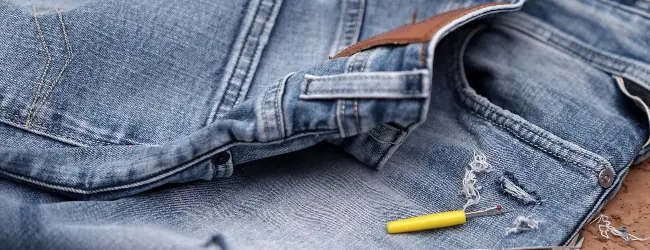I am now enjoying sewing as a hobby. Originally, I started it to organize my belongings. However, after I created enough bags and fulfilled that purpose, I wanted another goal: to sell my products. That made me think about the direction of my sewing. Let’s talk about it.
What should we create?
Sometimes, we want to decide in which direction to create our products. Although we want to make money with our work, we don’t know which field is efficient.
Identifying such a field allows us to be wealthier more effortlessly.
However, we sometimes don’t know how to discover it.

I had such a problem yesterday. After I finished creating my fifth bag, I accomplished my goal of organizing my closet well. Since I have an opportunity to learn sewing and sell my products, I wanted to make money by sewing.
However, I had no idea what to sew. Even if I asked my parents what kind of sewing can be sold well, they only replied, ‘I don’t know; I would rather want to know the answer.’
That made me think about how to determine the direction of our business. Fortunately, I knew that rationality is suitable for solving such a question without specific answers.
That led me towards creating remodeled bags with jeans for the time being. Today, I will explain why I chose that field. This example may help you rationally identify a suitable field for making money.
Criteria for judgment
When we determine what to create for money, we can use the following criteria.
- A long-term growth sector
- Something that is not sold in the major stores (avoiding competition)
- A field that you find interesting
It is advantageous to meet those broadly.
However, you don’t have to be perfect from the beginning. You can adjust the direction midway. Changing direction is easy if you are rational. That would allow you to decide and proceed lightly.
My case
To make it easier to understand, let’s look at my case. I am recently interested in sewing bags.
Sewing is one of the most traditional and largest industries. It means that many professionals and large companies have already entered the market, and it is fundamentally competitive. It has been mechanized, and many professional tailors work for companies. Even if sewing clothes is difficult to mechanize, apparel companies produce in countries with lower labor costs, such as Vietnam, Indonesia, and Bangladesh.

I could not compete with them, since those professional seamstresses use expensive, industrial machinery and specialized skills. On the other hand, I was merely an individual who started sewing several months ago living in a developed country.
In other words, I had to use my wisdom and talent—the ability of imagination and logical thinking and the circumstances of the developed country—to make money efficiently in this field.
Fortunately, I resolved my mental complex and started sewing as a hobby, so I didn’t have a particular preference for what I made. I wanted to make something more valuable—which is what people desire more, yet society doesn’t provide.
Considering the long-term flow of changes
I knew the remodeling industry was one of the long-term growth sectors in the sewing industry. People have begun to invest more in unique items rather than relying solely on mass-produced goods. In addition, wealthy people have come to place greater importance on reuse.
It is the same shift as the paper and water industries. It has become common for people to use recycled paper. In Singapore, a country known for its water scarcity, water reuse is also the norm. The wealthier people become, the more they start to consider the environment.

It means that remodeled clothes and bags have started to become more valuable than new ones. This is a major change in value. Old things are getting more valuable than new ones. We have entered an era where people pay for unique material items rather than mainstream information.
Considering the long-term flow of these changes in social values, it is natural that the clothing reuse market will rise for a while.
In other words, there are rising places even in a saturated market like sewing. In addition, they are advantageous for people living in developed countries.
Why I chose to make remodeled bags
I judged that bags are more effective than clothes. There are several reasons. Bags don’t have size differences like clothes. They require less fabric material. In addition, I learned that the sewing market is filled with many designers who prioritize aesthetics in clothing, while there are relatively few bag makers who emphasize functionality.
That made me decide to create cloth bags that are instantly recognizable as a remake rather than new, beautiful, and modern bags.
In the past, I thought that expensive, brand-name leather bags were the best. At the same time, I felt that remodeled cloth bags, such as those made from jeans and used clothes, were less stylish.

However, after I realized the flow of time, I intentionally chose the less stylish option. It was more rational and attractive.
I could not find the remodeled bags made with old jeans in any store. That is why I chose this field. It is worth trying if it has value but is not in the store. Avoiding competition is my first principle.
Even if there are any failures in my predictions, I can adjust my direction later. It is more efficient to try and get feedback rather than continue thinking at the desk.
Conclusion
That is why I decided to create remodeled bags with jeans for the time being.
There are rising segments even in a saturated market like sewing.
This example may help you rationally identify the field suitable for making money.
Thank you for reading this article. I hope to see you in the next one.


